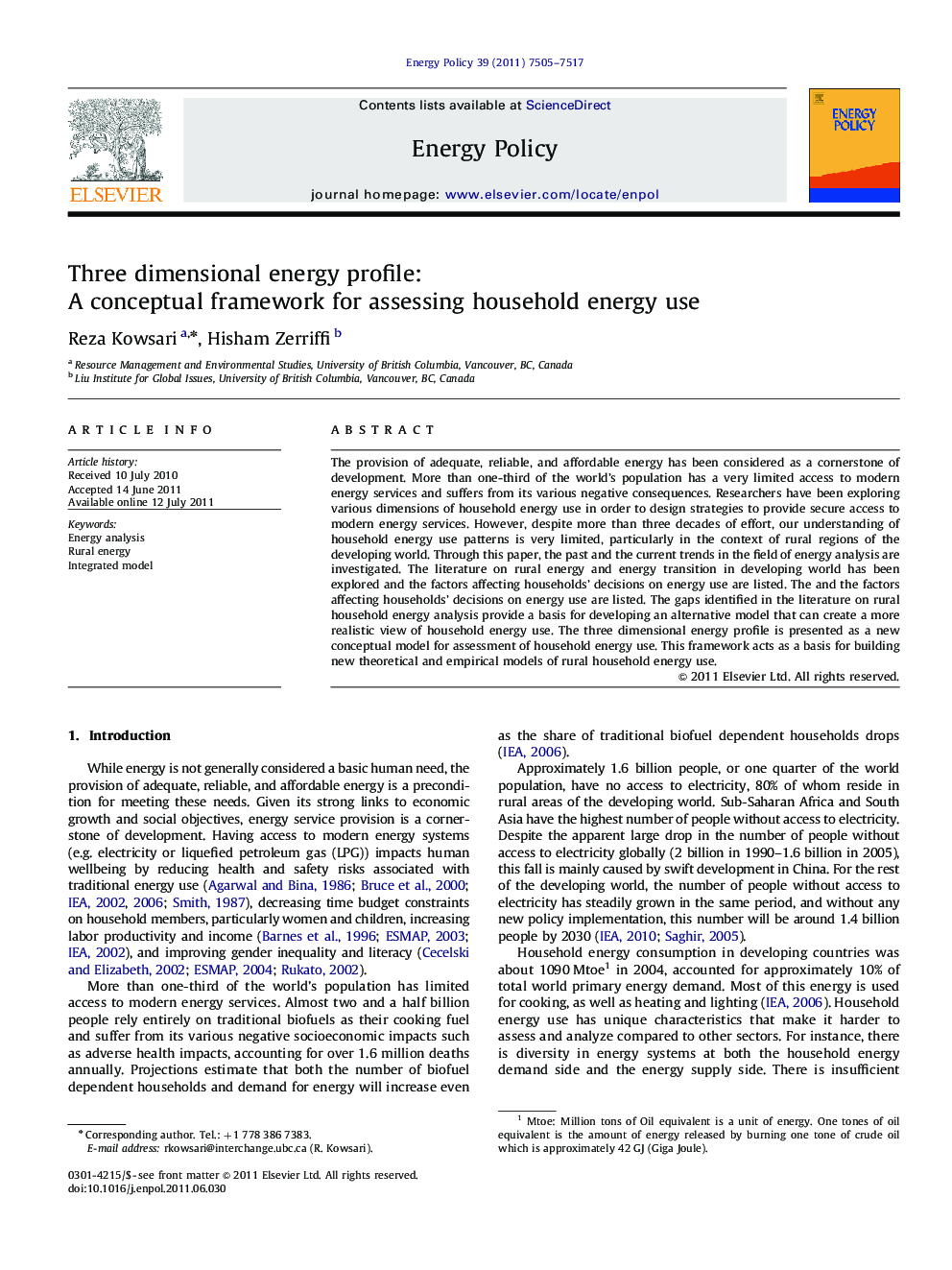| Article ID | Journal | Published Year | Pages | File Type |
|---|---|---|---|---|
| 993196 | Energy Policy | 2011 | 13 Pages |
The provision of adequate, reliable, and affordable energy has been considered as a cornerstone of development. More than one-third of the world's population has a very limited access to modern energy services and suffers from its various negative consequences. Researchers have been exploring various dimensions of household energy use in order to design strategies to provide secure access to modern energy services. However, despite more than three decades of effort, our understanding of household energy use patterns is very limited, particularly in the context of rural regions of the developing world. Through this paper, the past and the current trends in the field of energy analysis are investigated. The literature on rural energy and energy transition in developing world has been explored and the factors affecting households' decisions on energy use are listed. The and the factors affecting households' decisions on energy use are listed. The gaps identified in the literature on rural household energy analysis provide a basis for developing an alternative model that can create a more realistic view of household energy use. The three dimensional energy profile is presented as a new conceptual model for assessment of household energy use. This framework acts as a basis for building new theoretical and empirical models of rural household energy use.
► Reviews literature on household energy, energy transitions and decision-making in developing countries. ► Identifies gaps in rural household energy analysis and develops a new conceptual framework. ► The 3-d energy profile provides a holistic view of household energy system characteristics. ► Illustrates the use of the framework for understanding household energy transitions.
